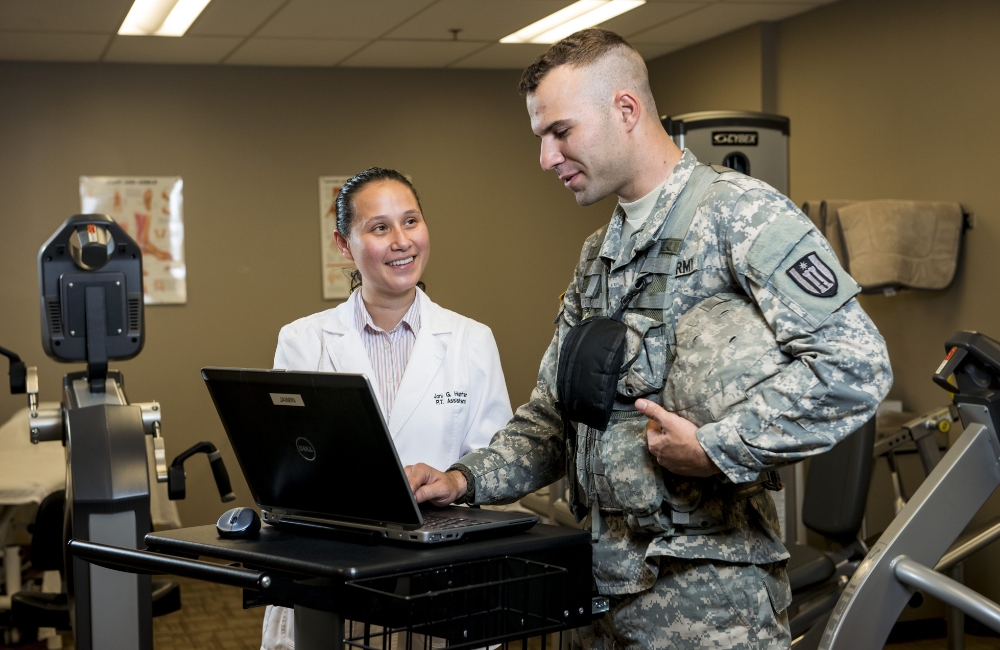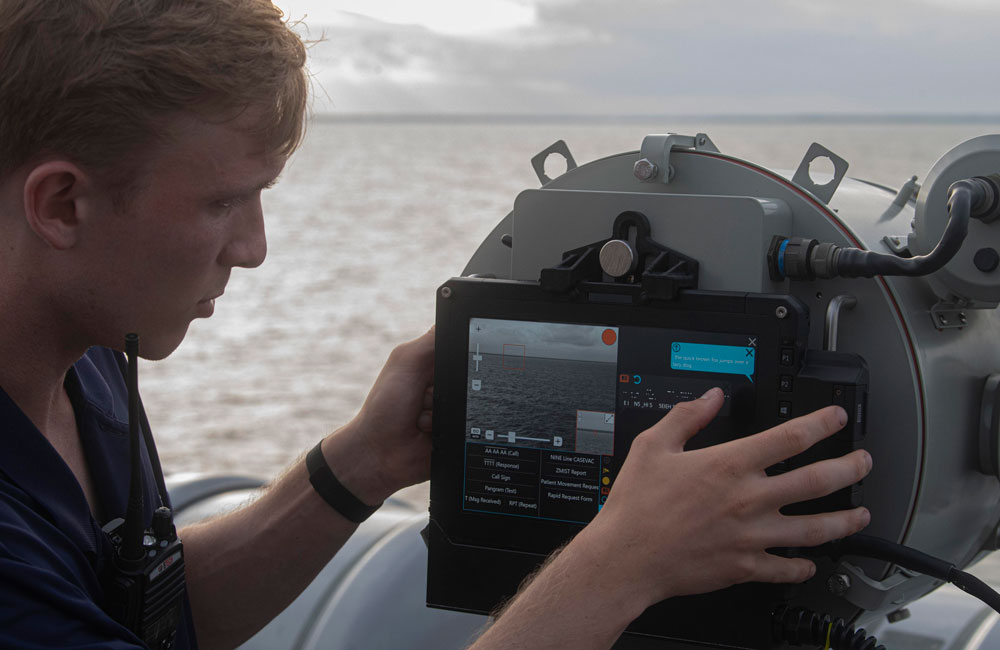How AI Can Help DOD Change Patient Outcomes On the Battlefield
AI and edge computing could help service members in combat zones endure through difficult circumstances.

Artificial Intelligence (AI) is one of the greatest areas of innovation in the Defense Department (DOD) medical field that could change patient outcomes in theater, according to Jesus Caban, chief of clinical and research informatics at the Walter Reed National Military Medical Center.
Service members in combat zones could often be days away from the nearest medical facility. In those instances, AI and edge computing capabilities can help save soldiers’ lives on the battlefield by enabling medics and other military service members to enter a data point, such as a picture of a gunshot wound or the type of injury the patient sustained, then get in touch with a “helper.” Based on the data entered, the “helper” can provide information about the kind of medical care the patient needs to receive.
“There are a lot of opportunities out there for us to be able to go and say ‘How are we leveraging devices at the point of injury, edge computing to be able to help — not the doctors — at that level are the corpsmen and the medics or the patient himself to stay alive for 24 hours, 36 hours into reaching a hospital,'” Caban said at the Red Hat Government Symposium Wednesday.
In the war in Ukraine, Ukrainian service members and allied partners are often days away from the nearest medical facility, making deployment of capabilities such as AI and edge computing critical for medics and patients on the ground.
“Unfortunately, when you don’t have air superiority, I think those things will happen,” Caban said. “Therefore, I think we need to be looking at those situations and saying, ‘Okay, how can edge computing, how predictive models that I have, how old the clinical data that I can have there, the environment, the sensors and so on will help to keep this patient alive. So I think that’s what we should be learning from these grim wars.”
DOD and the Department of Veterans Affairs (VA) researchers have also deployed AI and machine learning (ML) capabilities to understand and treat traumatic brain injury (TBI). Caban said that every active duty patient he has had since 1999 who sustained a brain injury is now in the registry, which includes around 510,000 patients.
With that data, researchers are now able to develop predictive models allowing doctors to understand the likelihood of developing mental health conditions.
“All the medical records have been standardized, and it’s in our registry, so maybe it’s some labs, medications, clinical notes, and so on. So then once we had that … now we need to start creating models to understand the likelihood of developing mental health conditions,” Caban said. “How many of them develop mental health conditions after having a concussion? Does it take six months to a year? When do they start developing those mental health conditions?”
Connecting patients’ data behind the VA firewall securely allows DOD and VA to conduct long-term analysis for the TBI programs with the help of AI and ML.
“I think AI methods are going to be essential to really understand the interconnections of diseases,” Dr. Mary Jo Pugh, VA research career scientist, told GovCIO Media & Research. “So you have the disease networks, and you can see that longitudinally with these longitudinal data. You can do a logistic regression with … typical methods, but you don’t see all of the interconnections. I’m not 100% positive, but I believe very strongly we’re going to see some interesting connections that we didn’t realize before.”
AI is also helping VA clinicians reduce administrative burdens and concentrate on treating patients instead.
“It’s true that there is no physician, clinician, psychologist who ever got into that field saying, ‘What I really want to do is fill out a bunch of forms, and I want to search through piles and piles of data to find what I really need,'” Amanda Purnell, director of data and analytics innovation at the Department of Veterans Affairs, said at the Red Hat Government Symposium.
This is a carousel with manually rotating slides. Use Next and Previous buttons to navigate or jump to a slide with the slide dots
-

CDC Updates Public Health Data Strategy
Accelerating data sharing through capabilities like electronic case reporting make up a large portion of the new two-year plan.
3m read -

Sea-Air-Space: Coast Guard Prioritizes Agility in the Face of Technological Change
Adm. Linda Fagan says the modern Coast Guard is to adjusting to the speed of technology.
10m watch -

AI Needs Strong Structures to Develop User Trust, Leaders Say
AI’s potential can only truly be met when guardrails and culture are in place, according to defense officials.
5m read -

Sea-Air-Space: Navy Sees Promise in Autonomy
The Navy is examining potential use cases for artificial intelligence within robots and other autonomous systems.
9m watch




